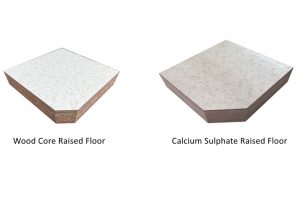Laying copper strip can make the anti-static place play a role stably. It works especially in the high-end machine room and data center which need high-precision control, equipment stability and data security. Before construction, confirm that the whole building has a good grounding and lightning protection system. There are usually two ways of laying copper strip.

Cross paving to lay copper strip
The first one is that laying the copper strip by the way of cross paving. Keep the distance between copper foils at about 1.2 m. Square the copper foil along the installation direction of the floor bracket. Connect the balance potential of the whole building with the copper foil, floor, bracket and crossbeam. Make the static electricity directly to the ground to release the static electricity. The laying should be smooth and straight. Because we should ensure that each node is closely contacted and the limit meets the potential balance.
Use the embedded ground wire
The second is to use the embedded ground wire to balance the potential. Most of them are fixed by copper strip. And consider the installation of floor bracket, floor fixing and wall fixing. According to the interval of the floor, make priority planning and intervention. Design well before the floor of the machine room is laid, which is difficult to be adjusted again in the process of laying. Before laying, contact with the electrostatic floor laying work system planning to reduce the problems. This kind of laying needs to make potential flat horizontal contact again in the floor support crossbeam to increase working hours and affect the floor installation progress. Generally, this kind of construction is before the installation of electrostatic floor. The lightning protection effect is good, but the construction period is long and the cost is high.

In the specific construction process, it is necessary to comprehensively consider which method to choose for construction according to the situation of the project site.




